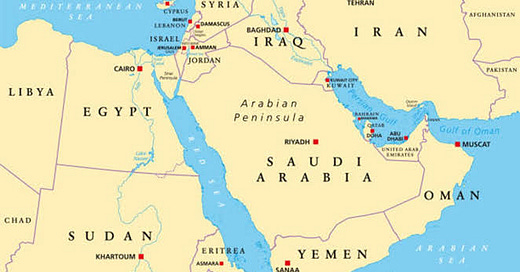The Red Sea—a corridor of history, commerce, and civilization. A waterway where ancient empires converged, merchants braved perilous voyages, and cultures interwove through the exchange of goods and ideas. From the spice-laden ships of the Egyptians to the gold-seeking traders of Axum, the Red Sea was both a bridge and a battlefield in the ever-evolving saga of trade.
Formation of Trade Relations
The Red Sea's strategic location between Africa, the Arabian Peninsula, and the Indian Ocean made it an early hub for commerce. Egyptian records dating back to 2500 BCE describe expeditions to the Land of Punt, a mysterious trading partner rich in incense, ebony, and myrrh. These journeys ignited a thriving commercial network, drawing traders from Mesopotamia, the Indus Valley, and beyond.
Phoenician merchants, renowned for their seafaring prowess, capitalized on these trade winds, establishing routes that connected the Mediterranean with the Indian Ocean. Greek and Roman traders later followed, eager to acquire Arabian frankincense, Ethiopian gold, and Indian spices, forging a global trade web centuries before the term "globalization" was conceived.
Exploration and Adventure
Trade across the Red Sea was as much an adventure as it was an economic endeavor. Merchants navigated treacherous waters, relying on seasonal monsoon winds to guide their vessels. Arabian dhows, with their distinct lateen sails, became the workhorses of maritime trade, maneuvering through narrow straits and unpredictable tides.
Stories of legendary explorers, like the Greek navigator Hippalus, who discovered the direct monsoon route to India, illustrate the courage and ingenuity of ancient traders. These voyages were fraught with peril—storms, shipwrecks, and the ever-looming threat of piracy. Pirate havens along the coast of modern-day Somalia and Yemen posed constant dangers, forcing merchants to travel in armed convoys or pay hefty tributes for safe passage.
Crisis and Conflict
Trade was never without conflict. The rise and fall of empires brought shifting alliances and battles for control over strategic ports. The Kingdom of Axum, situated in modern Ethiopia, emerged as a dominant power, rivaling Rome in its economic influence. Axumite rulers controlled crucial Red Sea ports like Adulis, exerting their dominance over trade routes.
Roman and Persian rivalries extended into the region, each empire vying for economic supremacy. The Byzantine Empire later sought to control Red Sea trade by forming alliances with Christian Axum against the Sassanid Persians. These power struggles often resulted in disruptions, forcing merchants to navigate shifting political landscapes as much as turbulent waters.
Foreign military interventions also played a role. The Ottoman Empire, recognizing the Red Sea’s importance, established fortresses along its shores, controlling the flow of goods and collecting lucrative taxes. European colonial powers in the 16th century followed suit, sending naval expeditions to stake their claims in the lucrative spice and silk trades.
Cultural Exchange and Religious Dynamics
Recognizing the multidimensional role of this water body, the Red Sea was more than a conduit for commerce - it also served as a melting pot of civilizations. Alongside gold and spices traveled ideas, languages, and religious beliefs. The spread of Judaism, Christianity, and later Islam followed the same routes as trade caravans, shaping the spiritual and cultural landscapes of the region.
Arab merchants played a crucial role in the transmission of Islamic teachings, carrying them to East Africa and the Indian subcontinent. Swahili culture, blending African, Arab, and Persian influences, emerged as a testament to these interactions, with architecture, language, and customs reflecting centuries of trade-driven exchange.
Even culinary traditions bear traces of this cultural fusion—Ethiopian coffee, Arabian dates, and Indian spices intermingled to create the rich culinary heritages of the region.
Modern Parallels
Though centuries have passed, the challenges and opportunities of Red Sea trade remain strikingly relevant. Today, the Bab el Mandeb Strait serves as one of the world’s most crucial shipping chokepoints, with global powers vying for influence over its waters. The piracy threats of antiquity find modern parallels in Somali pirate activity, prompting international naval patrols to secure trade routes.
The geopolitical struggles of ancient empires mirror today’s tensions, as regional and global powers seek to control ports and shipping lanes. China’s Belt and Road Initiative, Saudi Arabia’s Vision 2030, and the UAE’s port expansions echo the ambitions of past civilizations seeking to dominate Red Sea commerce.
Reflections on Red Sea Trade’s Legacy
The Red Sea’s trade history is a testament to humanity’s unyielding drive for connection and commerce. It has witnessed the rise and fall of empires, the blending of cultures, and the resilience of merchants who dared to venture into the unknown.
As modern economies navigate their own trade chokepoints, history offers a guiding light. The lessons of collaboration, adaptability, and strategic foresight remain as vital today as they were thousands of years ago. The Red Sea is no a relic of the past—it is a living narrative, continuously shaped by the hands of history.





